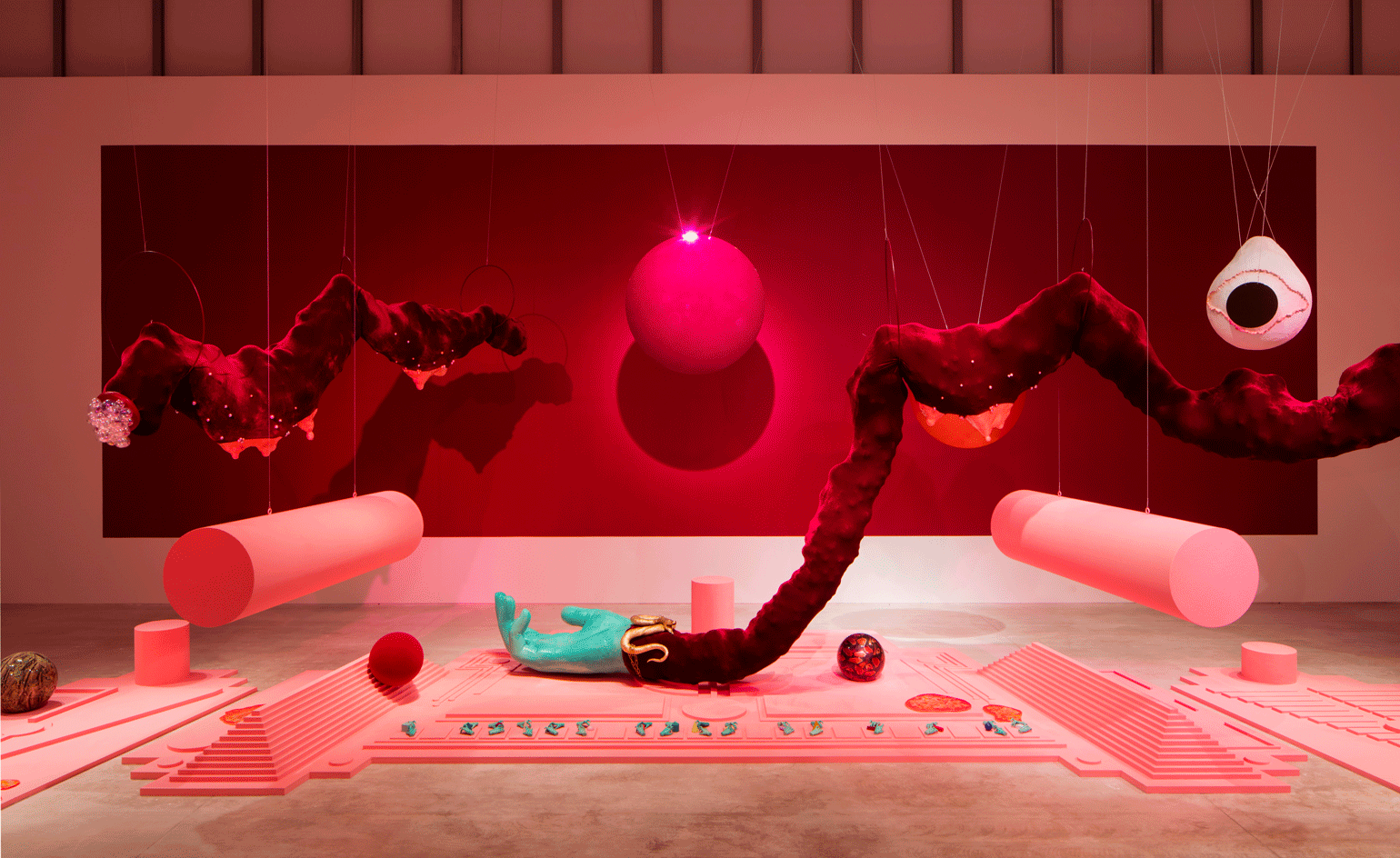
On 4 December, The Season of Cartesian Weeping, a group show at David Roberts Art Foundation curated by Hana Noorali and Lynton Talbot, culminated with a book launch. But instead of a slick exhibition catalogue, the publication—produced by the collective Am Nuden Da and documenting five other exhibitions—was one of the works included in Noorali and Talbot’s exhibition. The publication encapsulated all the ideas at work in the DRAF show, which focused on the power of collective action, as it worked against the demands of an art world obsessed with formal, marketable, and indeed, Instragrammable, content.
The night before, the four 2019 Turner Prize nominees—Lawrence Abu Hamdan, and Helen Cammock, Oscar Murillo, and Tai Shani—declared themselves a collective and awarded everyone the prize. It was the biggest upset of the art world since Banksy’s work shredded itself to pieces at Sotheby’s, the most powerful art auction house on the planet, instantly doubling its value.

Finally, a week after the Turner Prize fanfare had almost settled, Maurizio Cattelan duct taped a banana to Perrotin’s Art Basel booth in Miami and called it art. It became a sensation: influencers forked out the fair’s $65 entrance fee to get a selfie with the iconic fruit; an opportunistic performance artist consumed the banana and, following a press blast, flew himself to New York the next day for mass interviews. Three editions of this “era-defining masterpiece” continued to sell for upwards of $120,000.
“We are living in mass banana times, where prestigious institutions and galleries are aware of the market value of a good controversy”
Whether you consider them collective or not, all of these group actions involve a dance of power between players in the art world. Within all three instances, artists find themselves working inside the framework of the system in order to disrupt it—or exploit it further. The DRAF show and banana moment represent two opposite ends of the spectrum: in the former, artists and curatorial collectives are given an institutional platform (such as DRAF) to exhibit unconventional and largely unmarketable work; the other, meanwhile, takes a banal object and a half-baked punchline, and drops them into a bubbling vat of VIPs to alchemize value.
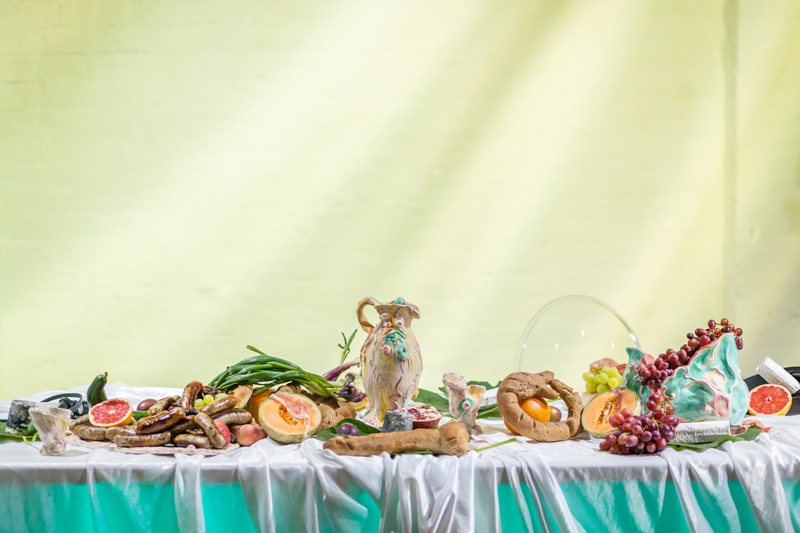
We are living in mass banana times, where prestigious foundations, institutions, and commercial galleries are aware of the market value of a good controversy. The struggle, then, is for artists to negotiate the boundary between claiming an opportunity and being taken advantage of by those in power. This, precisely, is what makes The Season of Cartesian Weeping such a significant exhibition.
“We were thinking of procedures more than outcomes,” co-curator Lynton Talbot says, explaining the pared-back appearance of the exhibition, which features projects by five art collectives and platforms: Parrhesiades (with Johanna Hedva), East London Cable, -f-r-i-e-n-d-s- (with Mark Aerial Waller), OFFSHORE, and Am Nuden Da. “Negotiating with the platform of an art foundation, we asked ourselves, how do we keep ourselves impervious to institutional extraction?”
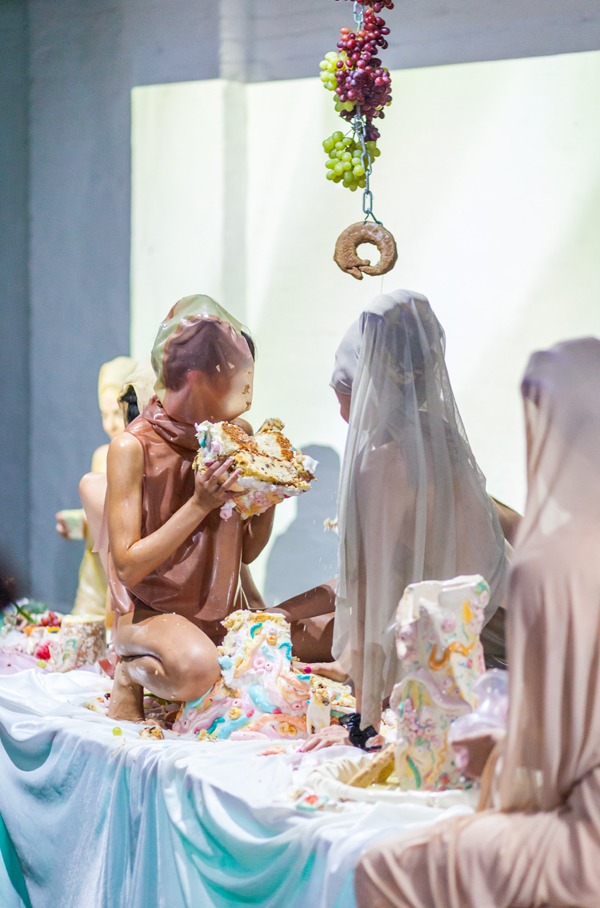
Stepping into DRAF’s Mayfair outpost, visitors encounter a minimalist and at times impenetrable getup. In the first room, a projector with three sets of headphones, two birth charts—one for the philosopher and mystic Simone Weil, the other for Robin Finck (the guitarist of Nine Inch Nails)—an XXL post-it note scribbled with black ink, and a monitor embedded in an architectural model. Room two offers a nebulous wall-pasted flow chart, a striped canvas bodega awning, photographs of children’s toys and a broom.
“In the past, collectivizing has proven a vital way of bucking political oppression”
The aesthetic language of the show was intentionally restricted, as both a fight against the pressures of marketability, the curators suggest, and to let the ideas and processes behind the projects take centre-stage. While the second room, heavy on found sculpture, felt like it could’ve had a good run in 1960s Fluxus, the front room was more porous and tender, stemming from Johanna Hedva’s new audio work Reading is Yielding (2019), an audio piece that traverses astrology, philosophy, the internet and mysticism, in the process of reading and being read to.
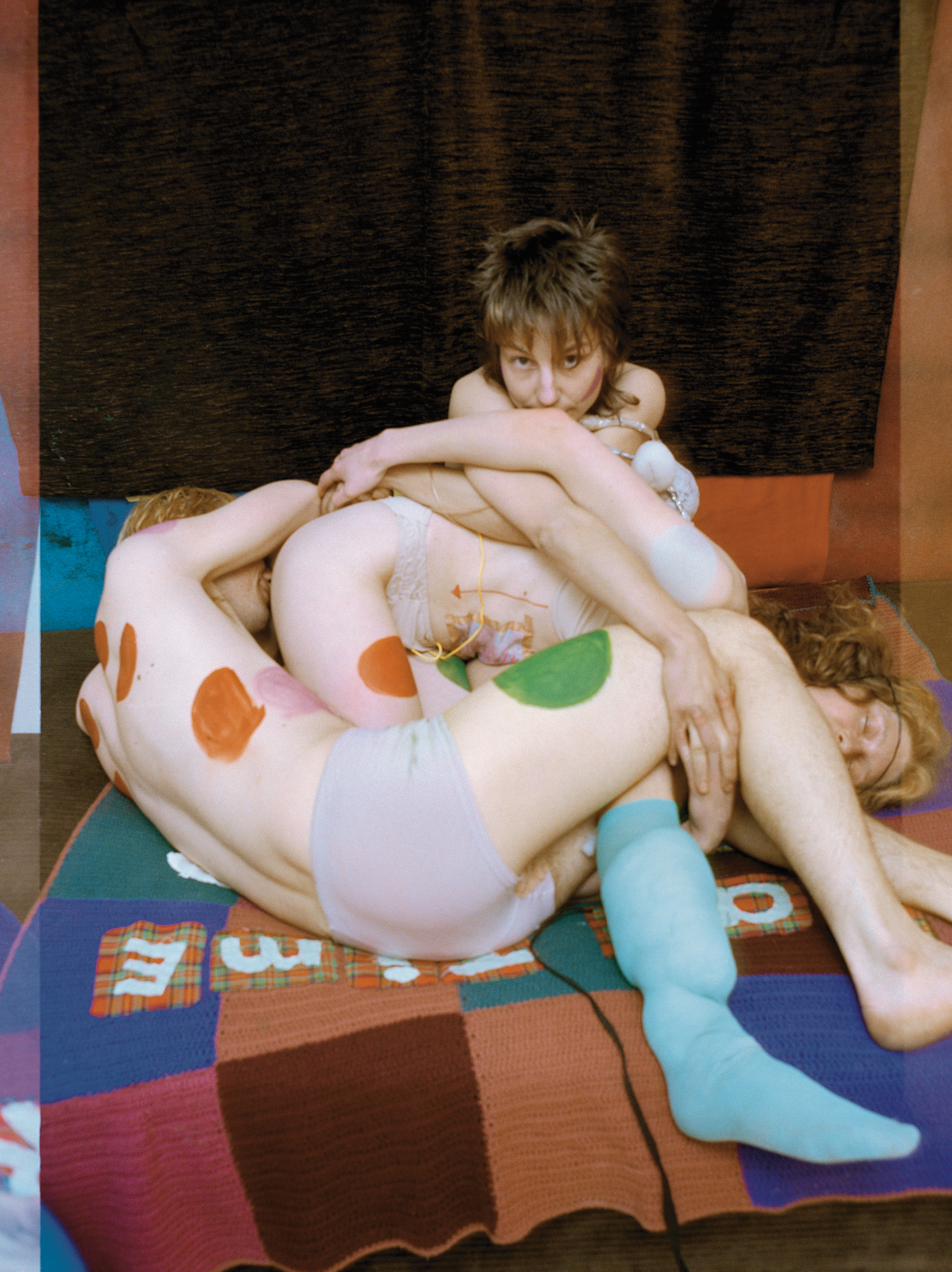
More on-the-nose in addressing the social and financial logistics and institutional negotiations of collective practice was East London Cable (ELC)’s contribution, a video installed within an architectural model of Raven Row, where the group is in-residence until December 2020. Clips from ELC’s annual meeting brought viewers into the collective’s world as they joke over failed funding applications and plot shared meals, weaving discussions about their work with the minutiae of everyday life.
“We are more like a network than a collective,” explains Jos Bitelli, a member of the ELC. “And we try to share resources like Raven Row as much as possible, to use the space for affective and generative production as well as building a collective movement at the speed of trust.” ELC’s contribution also thawed out the occasionally icy theory of the show, bringing Talbot and Noorali’s ideas to an intimate scale.

In the past, collectivizing has proven a vital way of bucking political oppression, from the post-war Fluxus group in Europe to the less-celebrated Gutai group in 1950s Japan and avant-garde Korean performance art in the sixties and seventies. Using an anarchistic and highly theatrical
approach to performance and large-scale immersive environments, Korea’s Fourth Group and Zero Group (Mudongin) challenged the traditional role of art while defying the authoritarian pressures of the Yushin Regime. Mining the politics of play, these groups took over public space with quizzical performances used as proxies for political action. For instance, Zero’s A Happening with a Vinyl Umbrella and a Candle, staged at the Union Exhibition of Young Artists in 1967, was essentially a collective demonstration against Japanese imperialism.
“Artists, increasingly suspicious of top-down exploitation, must negotiate the boundaries between sponsorship and selling out”
Back in the west some twenty years later, collectives like Honey-Suckle Company (HSC), founded in post-reunification Berlin, attempted to fend off the inevitable crush of globalization. Positioning their practice as a holistic healing method, the group worked between the realms of art, fashion and music to deliver anti-capitalistic effervescent experiences. While subversive in the 1990s, HSC finds a natural parallel in the quirky healing retreats and immersive art installations commissioned by content-hungry megabrands, from Gucci to Red Bull, three decades later. HSC’s first retrospective, Omnibus, is currently on show at the ICA; sand-filled and pale-pink hued rooms peppered with memorabilia present a nostalgia-tinged rendition of their work that doesn’t shy away from its own Instagrammability.
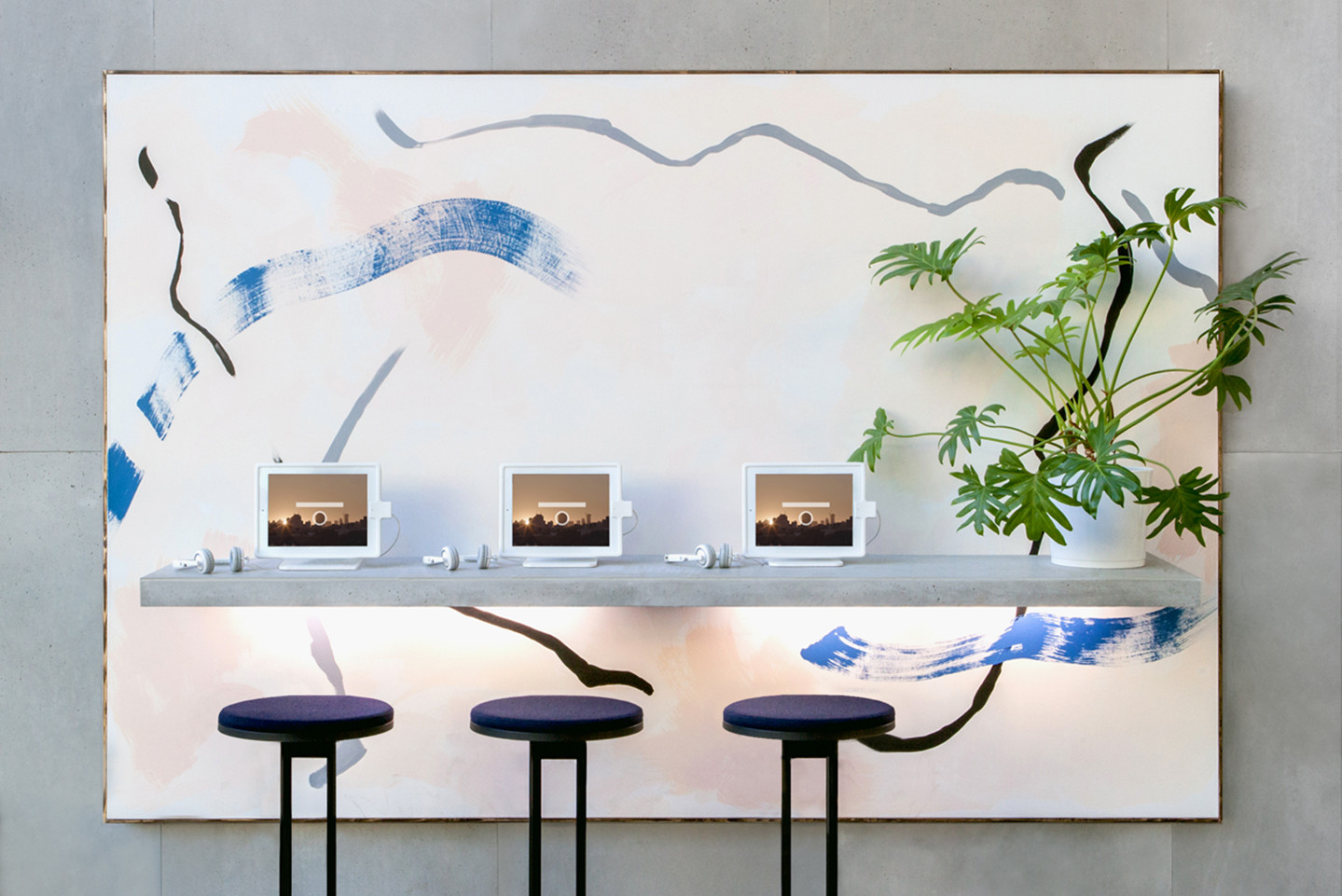
Wise now to the cultural capital embedded in the marketing of experimental practices, museums, galleries and fairs are rushing to mine history’s archive of unsung (and unmarketed) collectives; The Guggenheim, Hauser & Wirth, and Sotheby’s have all staged Gutai retrospectives in the past five years. Artists, increasingly suspicious of top-down exploitation, must negotiate the boundaries between sponsorship and selling out.
As a pre-emptive defence against the marketability of nearly everything, some collectives even adopt the alias of a company. Brandishing brand language, corporate aesthetics and business strategy, groups and projects like DIS, curators of the riotous 9th Berlin Biennale in 2016, OFFSHORE (whose corporate wall text was included in The Season of Cartesian Weeping) and Christopher Kulendran Thomas and Annika Kuhlmann’s real estate company, New Eelam, use incorporation as protective armour while working inside the system, a strategy which comes at the risk of alienating its audience.
But as Cattelan’s banana suggests, holding a mirror up to the commercial senselessness of the art world won’t stop it in its tracks; it only feeds the flames. The 2019 Turner Prize reveals just how deep contemporary art is entrenched in its economic function: the generative intent behind sharing the prize inevitably increased the market value of all four nominees’ work, perpetuating further inequality. Escaping the content accelerator would require artists to step out of the system entirely, and for collectives to strategize the nature and value of their own practice. The Season of Cartesian Weeping, an unmarketable and largely immaterial exhibition of alternative collective practice, offers a rare glimpse into that world of possibility. Now it’s up to us to adjust our own field of vision for what art looks like, and what it can do.





